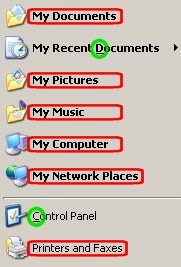Teaching:TUW - UE InfoVis WS 2005/06 - Gruppe G8 - Aufgabe 1 - Consistency
Definition(s)
Introduction
"Consistency (in Design)" is often referred to as the central criteria for successful user interaction. Any interface wants to keep its user focused, and additionally guide him to a procedure or structure. All this needs a clear and consistent framework of elements within the design of the interface.
The following list tries to give a ranking, which elements of an interface are most important to be consistent [Bruce Tognazzini, 2003].
- Interpretation of user behavior, e. g., shortcut keys maintain their meanings.
- Invisible structures.
- Small visible structures.
- The overall "look" of a single application or service--splash screens, design elements.
- A suite of products.
- In-house consistency.
- Platform-consistency.
It is a common error to assume the list is should be the other way round, providing interfaces looking similar on the outside, but have a completely different behaviour on the inside. This would lead to major difficulties in usage, and thus in the success of the system. [Bruce Tognazzini, 2003]
To give an example for the points mentioned above in the list, I want to refer to Microsoft Windows as a software system and its applications.
ad 1.
Point one is fulfilled because it is a rule that all (?) the commands in Windows have a shortcut of the same nature: STRG+[underlined letter of command].

Unfortunatly the counter example can also be given within the Windows Software. Due to its large complexity there are some areas where this rule is just partially fulfilled.

Examples
Conclusion
Bibliography
[Bruce Tognazzini, 2003]
First Principles of Interaction Design, Nielsen Norman Group
http://www.asktog.com/basics/firstPrinciples.html
Back to G8